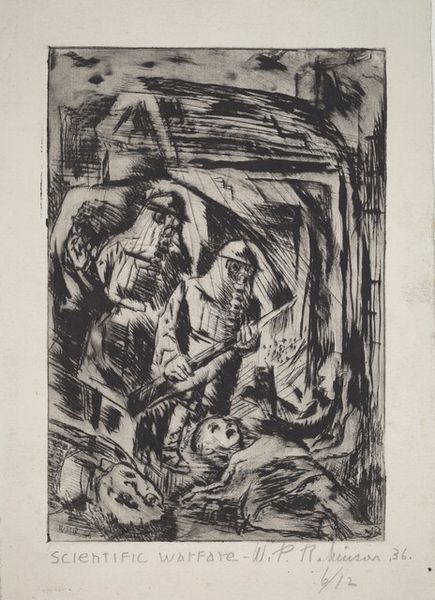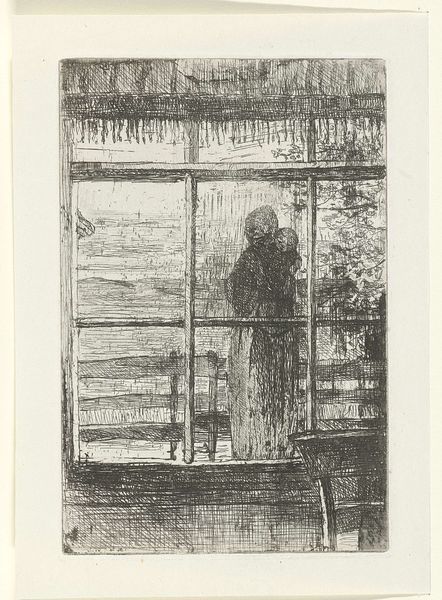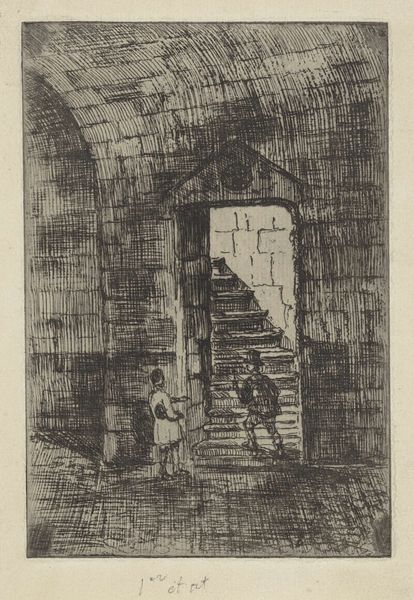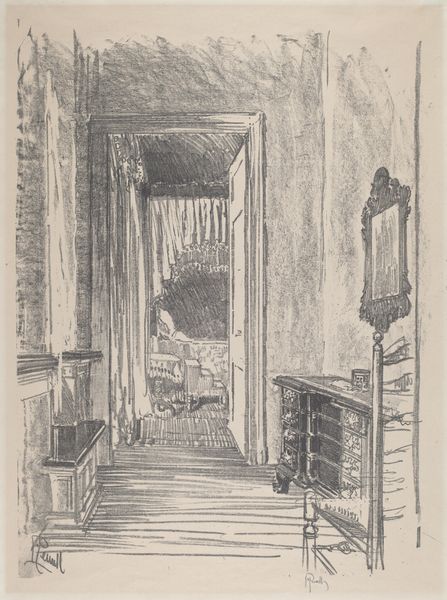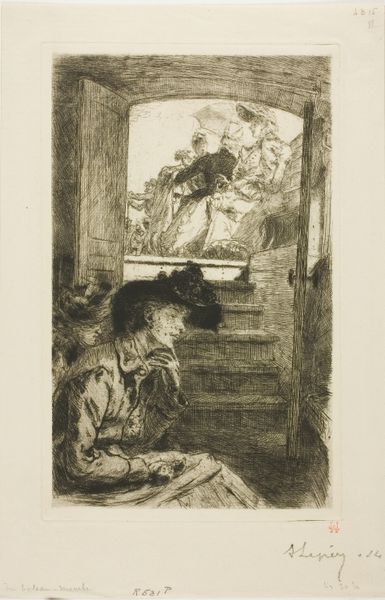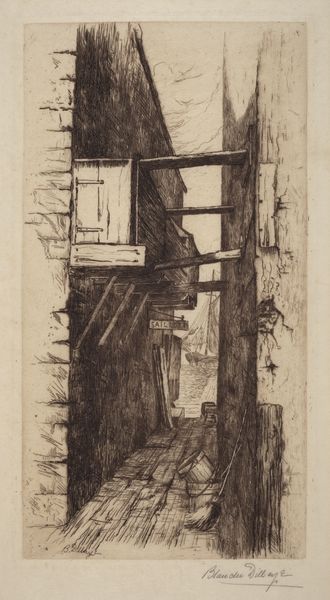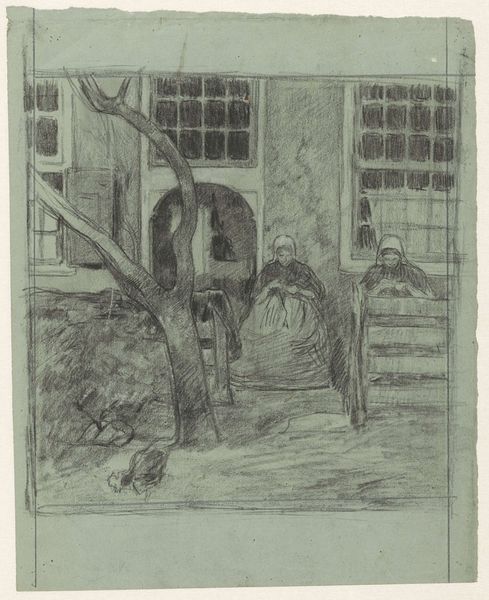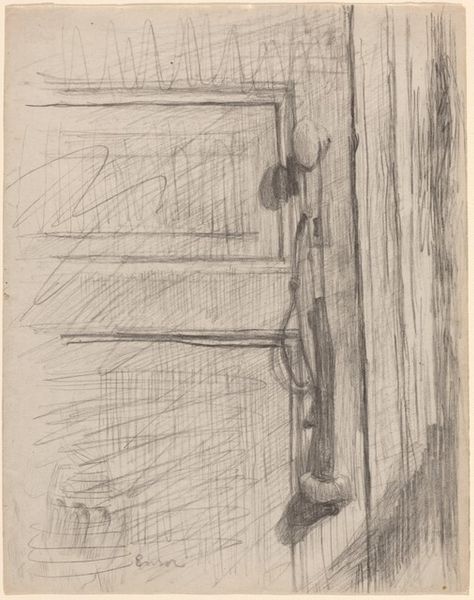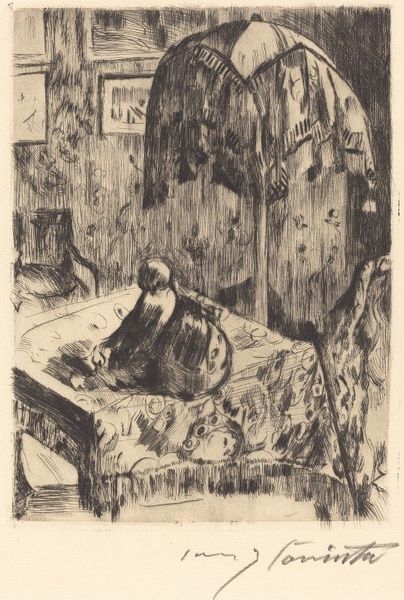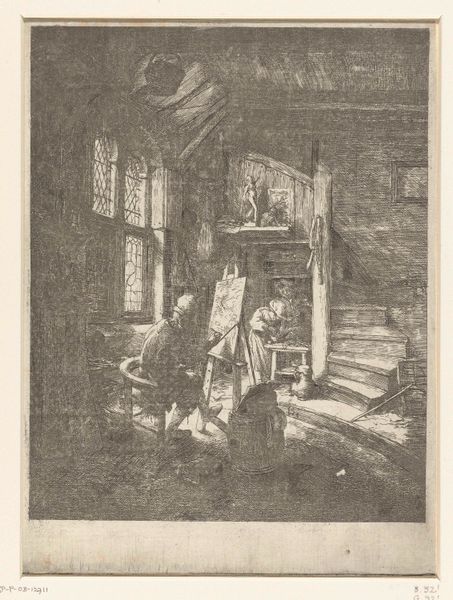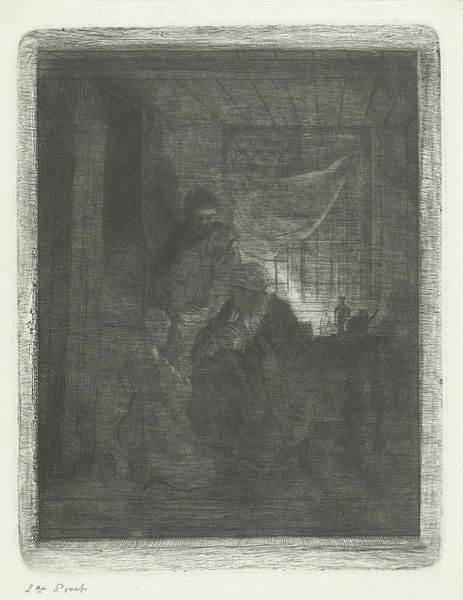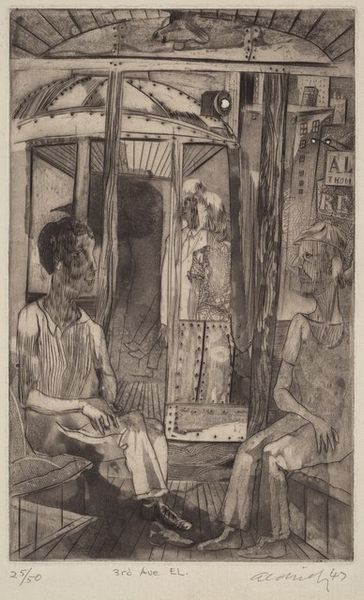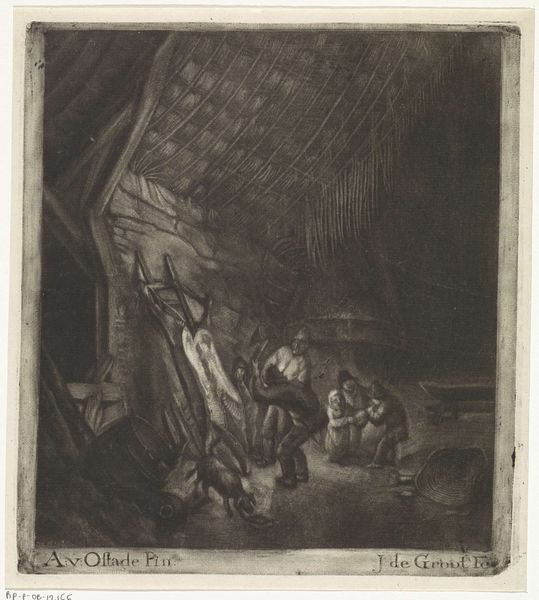
Unterm Hakenkreuz: Gestapo im Haus (Under the Swastika: Gestapo in the House) 1934
0:00
0:00
Dimensions: plate: 24.5 × 19.7 cm (9 5/8 × 7 3/4 in.) sheet: 61.5 × 47.9 cm (24 3/16 × 18 7/8 in.)
Copyright: National Gallery of Art: CC0 1.0
Editor: This etching, "Under the Swastika: Gestapo in the House" by Lea Grundig, created in 1934, feels incredibly chilling. The figures peering from behind the door have a haunting quality. What strikes you about this piece? Curator: As a historian, the date is especially significant. 1934 marks a pivotal moment in Nazi Germany, a period of consolidation and escalating persecution. Grundig, as a Jewish artist and communist, was directly targeted. The title itself is a blatant act of defiance, pointing to the climate of fear imposed by the regime. How does the visual composition reinforce this political message for you? Editor: I guess the close proximity of the figures to the viewer and the wide open doors amplify that feeling of inescapable dread and intrusion. It's like there’s nowhere to hide. Curator: Precisely. The Expressionist style enhances this, doesn't it? Think about how it exaggerates emotions and distorts reality. Grundig's choice of printmaking as a medium also plays a crucial role. It allowed for wider distribution of this potent political statement during a dangerous time. Where do you see other evidence of this kind of danger? Editor: Looking closer, it's also there is the almost frantic scratching of the lines – which must be the etching technique – that seem to enhance a sense of panic in the figures themselves. They appear almost caged between these walls. It's powerful to see this kind of resistance in art. Curator: It is. And understanding the social and political context truly amplifies the emotional impact and demonstrates the courageous role artists played during those years. Editor: I never thought about art as an act of such brave defiance before! This work gave me a new perspective. Curator: Indeed. Analyzing art through the lens of history reveals profound truths about the past and present.
Comments
No comments
Be the first to comment and join the conversation on the ultimate creative platform.
